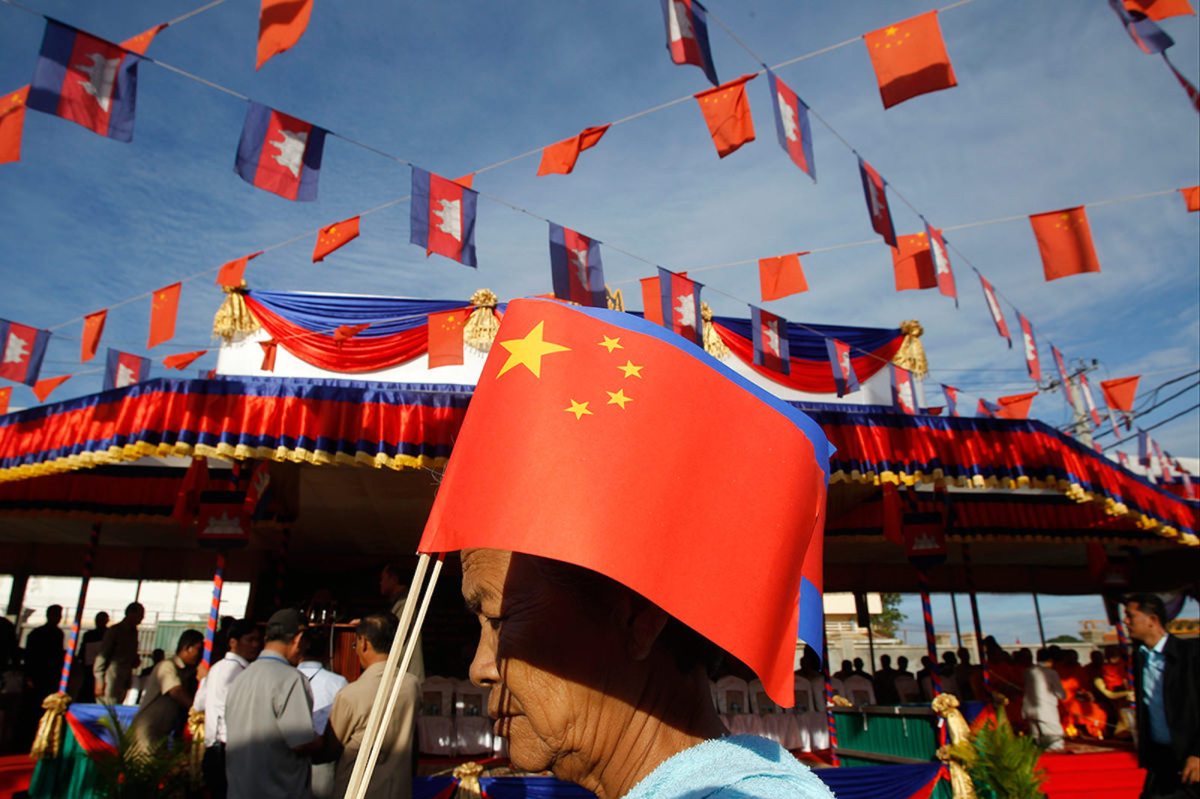Global Courant
China is Cambodia’s largest bilateral donor, lender, investor and trading partner. About a quarter of Cambodia’s total trade, a third of its aid and two fifths of its foreign direct investment (FDI) and foreign debt are with China. Although Sino-Cambodian diplomatic and economic relations go back centuries, they have grown significantly in recent decades.
Economic relations have been strengthened through Cambodia’s active participation in the Belt and Road Initiative (BRI). Cambodia has been an outspoken and enthusiastic supporter of the BRI since its establishment in 2013.
In Cambodia, the BRI mainly focuses on loans for the development of physical transport infrastructure, although it is also indirectly associated with the development and transformation of the port city of Sihanoukville.
There are also investments in agriculture, energy and light manufacturing.
Participation in the BRI has costs and benefits. As a least developed country aiming to achieve upper middle income status by 2030, Cambodia has embraced the BRI as an important tool to address infrastructure shortfalls and reduce trade and transportation costs.
The BRI has also supported the development of the energy sector and the diversification of agriculture. This has increased productivity and led to trade expansion and high economic growth without compromise debt sustainability.
The rapid economic growth has increased wealth inequality, but also increased the general standard of living and production sharp reductions in poverty. Between 2009 and 2019, incidence of poverty (US$1 per day) almost halved from about 34% to 18%. This performance is the result of several factors, but the contribution of the BRI cannot be denied.
The government has not conducted a quantitative cost-benefit analysis of the BRI in Cambodia. The presence of BRI projects alongside huge socio-economic benefits suggests that the country has reaped net benefits from the BRI.
There are also no concerns regarding “debt trap diplomacy” as debt levels remain less than 40% of GDP. Yet there are risks associated with increasing reliance on just one country for economic and non-economic needs.
The BRI provided the transportation and associated infrastructure that enabled the transformation of Sihanoukville from a sleepy beachside resort town to a bustling entertainment center focused on gambling. The spillover benefits of this rapid development for the local communities seem limited, while there is growth proof rise in the cost of living, crime, corruption and various forms of inequality.
A Chinese casino lit up at night in Sihanoukville, Cambodia. Photo: Facebook
While the BRI was not directly involved in transforming Sihanoukville in this way, it was enable the conditions for its development. The real and perceived costs of these rapid transformations have led to disruption and displacement among local communities.
Experts are concerned about the environmental and resettlement impacts of BRI projects. The second BRI forum committed in 2019 to reducing problems through increased community consultation and stakeholder participation. It is still too early to say whether these talks will actually take place.
The Forum also decided to multilateralize the BRI by expanding the participation of regional institutions, though still based in China. In Cambodia this is done through a gradual shift in financing projects from Chinese state-owned banks and companies – whose activities are sometimes obscure – to the Asian Infrastructure Investment Bank (AIIB), a multilateral development institution.
The role of the AIIB is set to increase rapidly and increase overall transparency, including contractual obligations.
But to what extent AIIB’s involvement will also raise environmental standards and other safeguards remains unclear. This is because the AIIB has national environmental and other standards and policies that may not meet global benchmarks.
AIIB oversight of the implementation of environmental standards or resettlement policies may also involve national authorities rather than an independent party, which can be problematic.
How can Cambodia ensure that future projects are net positive?
Cambodia’s Development Committee reviews FDI proposals as part of the process of obtaining Qualified Investment Project (QIP) status and securing tax incentives. While some of the criteria used in determining QIP status relate to assessing potential benefits to the local economy, the analysis lacks a comprehensive cost-benefit framework.
This also applies to the new investment law passed in 2021, which is mainly aimed at facilitating FDI. Both the QIP and the Investment Act ignore macroeconomic issues such as debt or the sustainability of investments and do not attempt to measure wider spillover effects on the economy.
A view of the Morodok Techo National Stadium, funded by Chinese grant under the Belt and Road Initiative, in Phnom Penh. Photo: AFP/Tang Chhimn Sothy/SWIMMING POOL
Cambodia requires a formal framework to assess the potential costs and benefits of all project proposals as part of a conventional approval process.
Cambodia could consider establishing a new Projects Review Board, which could operate as a non-statutory body with interdepartmental and multi-stakeholder representation, to review individual proposals in a purely advisory role to the government.
Technically competent personnel capable of conducting comprehensive cost-benefit analyzes should support this project. A well-functioning Projects Review Board could help prevent the kind of BRI projects that left neighboring Laos behind serious debt.
A transitional economy such as Cambodia must be selective and strategic in the choice of projects if it is to grow in a sustainable and inclusive manner. It has done well so far, but an independent review mechanism is needed to continue its success.
Jayant Menon is a Senior Fellow at the ISEAS-Yusof Ishak Institute.
This article was originally published by East Asia Forum and has been republished under a Creative Commons license.
Similar:
Loading…








